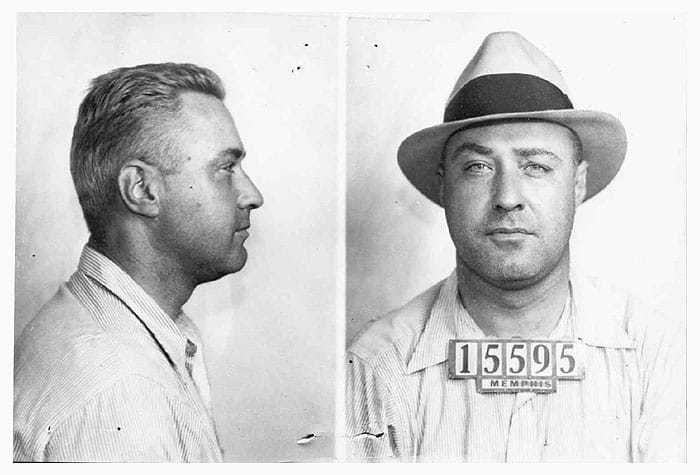From the end of the Roaring Twenties through the Great Depression, America’s middle west was plagued by roving criminal gangs, some of the them famous, all of them infamous. The newspapers reported on their depredations in often purple prose, with glaring headlines and exaggerated stories. Bonnie and Clyde, John Dillinger, Ma Barker and the Barker Gang, Machine Gun Kelly, Pretty Boy Floyd, and many others roamed the Midwestern roads, leaving in their wake robbed banks, grocery stores, gas stations. Laws were changed to accommodate their capture, the FBI became an armed national police force rather than just an investigating arm of the Justice Department.
The gangs were less than an average lifetime removed from those of the James brothers, or the Dalton Gang, to whom they were often compared. They brought a new level of violence to their actions, inspired by the gang wars of the 1920s in cities such as Chicago and New York. It seemed as if they were uncatchable and on the occasions when they were caught the jails were unable to hold them. Some taunted the press, others – Dillinger comes to mind – considered themselves to be on the same level socially as elected officials or industrial leaders.

One by one they were rounded up, jailed or killed trying to avoid arrest, or in the case of Bonnie and Clyde, killed in an ambush. Their time in the spotlight was short, intense, and singularly violent. Here are some of the roving outlaw gangsters which made the Great Plains their own in the 1930s.

Wilbur “Mad Dog” Underhill
By the time Wilbur Underhill turned 25 years old he had already logged seven years in prison, for crimes of petty larceny, burglary, robbery and other offenses. According to his mother Wilbur had suffered a childhood accident or illness, whichever was never made clear, which left the youngster not “quite right.” Released on parole from his second prison sentence in 1926, Wilbur and an accomplice, Ike Adams, who went by the nickname of Skeet, robbed a drug store in Okmulgee, Oklahoma on Christmas Day. During the robbery a customer of the store named George Fee was killed. Fee was 19.
Wilbur and Skeet remained at large through New Years Day, before being arrested on January 7, charged with robbery and murder. They escaped at the end of the month, Skeet was recaptured and killed trying to escape again, and Wilbur remained free until March, when he was captured, convicted, and sentenced to life in prison for the Fee murder. In July 1931 Wilbur escaped from the Oklahoma State Penitentiary, and continued his interrupted career as a robber and murderer. By September 1931 Wilbur had been involved in several robberies and shootings, including the death of a two year old boy in a shootout with police, and the murder of a police officer. Captured again and given another life sentence, he was imprisoned in Lansing.
In 1933 he escaped again, and within a few weeks participated in several bank robberies in Oklahoma and Arkansas. By 1933 Underhill was leading a gang which had carried out robberies in Kansas, Arkansas and Oklahoma. After Underhill obtained a marriage license in his own name in Oklahoma, despite the presence of a government task force allegedly searching for him, he celebrated his nuptials by robbing a bank in Kentucky, as a wedding present for his new bride. By now Underhill was known nationally, and an increasingly irritated J. Edgar Hoover was determined to bring him to justice.
Underhill and his associates continued to operate in the Cookson Hills and Oklahoma City regions, robbing at least two more banks, and through a combination of good luck and the ineptitude of local law enforcement stayed clear of the authorities. FBI agents too failed to apprehend the gang, despite staking out the home of his wife, the former Hazel Hudson. The FBI staged a flashy raid on a farm where Underhill had been staying, with reporters and photographers in tow to record the arrest for posterity. Underhill had passed them on the road to the farm and thus once again evaded arrest.
Underhill’s luck ran out just after Christmas, 1933 when the FBI finally trapped him and his cronies at a small rented cottage in Shawnee, Oklahoma. Two dozen federal agents and local deputies surrounded the house and when Underhill opened fire in response to their demand he surrender they let loose with a fusillade which killed a witness and wounded Underhill. He fled to a furniture store nearby, broke in, and collapsed on one of the beds inside. Arrested, he lived another week before dying in a hospital, handcuffed to his bed, with guards inside and outside the room. Underhill was responsible for at least five murders in his short career, and likely several others attributed to members of his gang.

